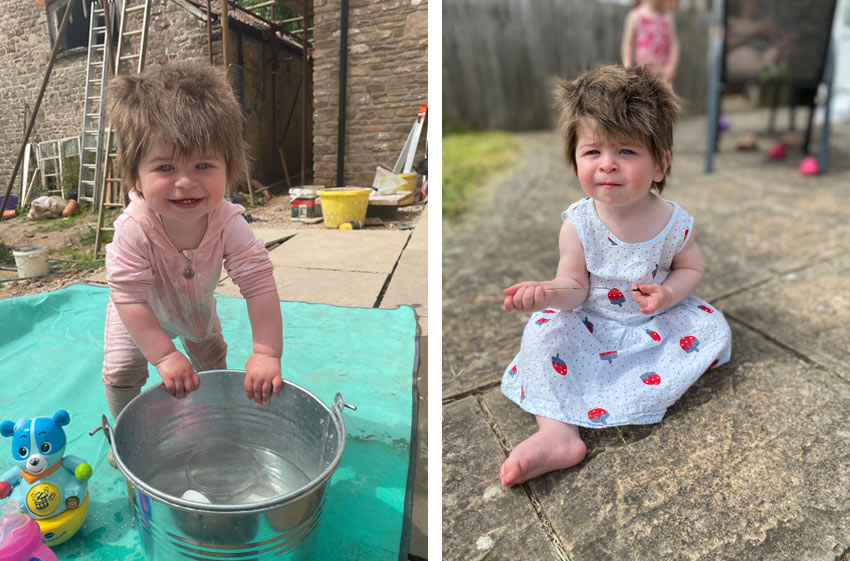A few weeks ago, we connected with HI Mom Emma Shackell, who shared her daughter Heidi’s HI-Story with us. Emma recently started an Instagram page (@hyperinsulinism_and_heidi) to share her daughter’s journey. Following Heidi’s diagnosis, Emma struggled to find answers and resources about how to treat and manage her daughter’s congenital hyperinsulinism (HI). Wanting to help other HI parents, she decided to make her page a place to share Emma’s HI journey, hoping to reach other parents and caregivers in the same situation.
“Hyperinsulinism is so unknown! Nobody seems to know what it is or how serious it can be, and it is great to spread awareness!” – Emma
About Heidi:
Heidi is an 11-month-old girl from England. Despite having hyperinsulinism, she is a very “smiley” and happy child who never fails to bring joy to other people. “She faces daily challenges with hyperinsulinism yet never fails to produce a smile,” said Emma.
One of Heidi’s favorite things is playing with her big sister, Grace. You can find Heidi being the happiest when she is playing with water, especially in the summertime.
Diagnostic Journey:
Heidi’s first few months before receiving an official diagnosis were very challenging for the Shackell family. She was an exhausted and unsettled baby who constantly needed to eat. Once Heidi started to sleep through the night, she began to have seizures from her sugar dropping as she slept. Doctors misdiagnosed the cause of her seizures as “breath-holding attacks.” Concerned and unsatisfied, her mom took her to the hospital, where doctors discovered her glucose levels were only 1.6 mmol/L. After that visit, Heidi was correctly diagnosed with hyperinsulinism. Her hyperinsulinism is non-genetic, with no genetic traits known.
Keeping Her Sugars on Schedule:
Heidi’s blood sugar is generally lower in the morning and increases throughout the day. The Shackells manage Heidi’s HI by sticking to a strict medication and testing schedule. Currently, she takes Diazoxide and Chlorothazide four times a day. At 6:00 AM, she receives her first medications and blood sugar testing of the day. After giving her a bottle of milk and breakfast, her parents retest her levels to ensure they are stable. Her second dose of medication is at 2:00 PM and 6:00 PM. She goes to bed at 7:00 PM and takes a high-energy supplement as her bedtime milk. Her last dose of medication is while she is sleeping at 10:00 PM (and her parents hope this doesn’t wake her up!).
Triumphs & Challenges:
While the side effects of Heidi’s medications aren’t ideal, the Shackells are grateful that Heidi’s side effects are manageable. A consistent concern is the dosage of Heidi’s medication. Right now, her dosage regularly increases, but the Shackells worry about the future if Heidi’s dosage hits a limit.
As Heidi continues to grow, new difficulties with managing her HI also grow. Discovering how different things in her immediate environment, such as the summer heat or teething, affect her is an ongoing challenge. If she feels unwell from one of these events, her feeding routine usually changes, which can lead to leading to an episode of Heidi experiencing hypoglycemia.
Among the challenges, there has been at least one stellar success for the Shackells with Heidi’s journey. A massive sense of relief has come from seeing Heidi meet her development milestones, as they were unaware if the extended hypoglycemia had any effect on her brain due to late diagnosis. “A big triumph is completing a 12-hour fasting period with no hypos,” Emma shared excitedly.
Follow @hyperinsulinism_and_heidi to stay up to date with Heidi’s HI journey and to connect with Emma.


